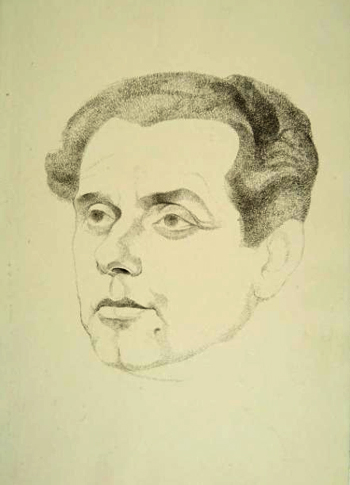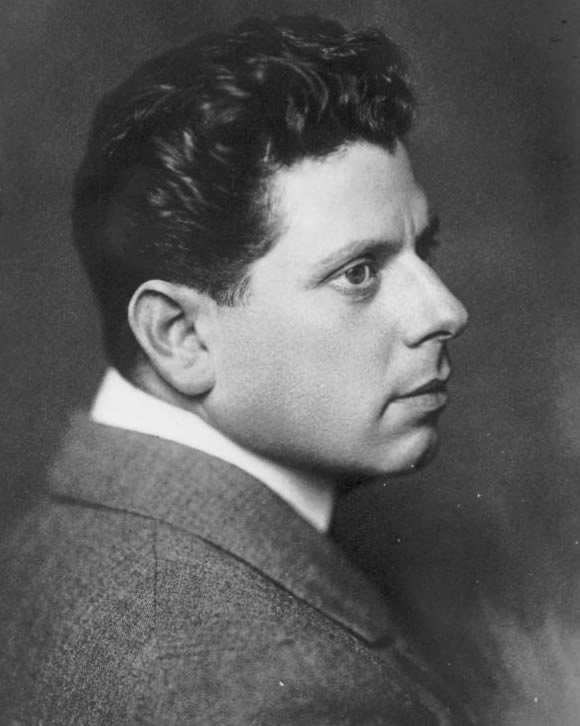Max Reinhardt (1873-1943) in 1911.
- Profession: Film actor, film director.
- Residences: Vienna, Berlin
- Relation to Mahler:
- Correspondence with Mahler:
- Born: 09-09-1873 Baden, Germany.
- Died: 30-10-1943 New York, America.
- Buried: Westchester Hills Cemetery in Hastings-on-Hudson, Westchester County, New York, America.
Max Reinhardt was an Austrian-born American stage and film actor and director. Reinhardt was born Maximilian Goldmann, an Austrian Jew, in Baden bei Wien, Austria-Hungary. From 1902 until the beginning of Nazi rule in 1933, he worked as a director at various theaters in Berlin. From 1905 to 1930 he managed the Deutsches Theater (“German Theatre”) in Berlin and, in addition, the Theater in der Josefstadt in Vienna from 1924 to 1933. By employing powerful staging techniques, and harmonising stage design, language, music and choreography, Reinhardt introduced new dimensions into German theatre.
The Max Reinhardt Seminar in Vienna, which is arguably the most important German-language acting school, was installed implementing his ideas. Siegfried Jacobsen wrote Max Reinhardt in 1910. In 1920, Reinhardt established the Salzburg Festival with Richard Strauss and Hugo von Hofmannsthal, notably directing an annual production of the morality play Everyman about God sending Death to summon a representative of mankind for judgment. In the United States, he successfully directed his own play The Miracle in 1924, and a popular stage version of Shakespeare’s A Midsummer Night’s Dream in 1927.

Max Reinhardt (1873-1943) by Viktor Tischler , 1920.
Reinhardt followed that success by directing a film version in 1935 using a mostly different cast, that included James Cagney, Mickey Rooney, Joe E. Brown and Olivia de Havilland, amongst others. Mickey Rooney and Olivia de Havilland had also appeared in Reinhardt’s 1934 stage production, which was staged at the Hollywood Bowl. The Nazis banned the film because of the Jewish ancestry of both Reinhardt and Felix Mendelssohn, whose music (arranged by Erich Wolfgang Korngold) was used throughout the film.
After the Anschluss of Austria to Nazi-governed Germany in 1938, he emigrated first to Britain, then to the United States. Reinhardt opened the Reinhardt School of the Theatre in Hollywood, on Sunset Boulevard. Several notable stars of the day received classical theater training, among them actress Nanette Fabray. In 1940 he became a naturalized citizen of the United States. At that time, he was married to his second wife, actress Helene Thimig, daughter of actor Hugo Thimig.
Compared with most of his contemporaries, Reinhardt was more interested in film than in theater. He made films as a director and from time to time also as a producer. His first staging was the film Sumurûn in 1910. After that, Reinhardt founded his own film company. He sold the film rights for the film adaptation of the play Das Mirakel (English: The Miracle) to Joseph Menchen, whose full-colour 1912 film of The Miracle gained world-wide success. Controversies around the staging of Das Mirakel, which was shown in the Vienna Rotunde in 1912, led to Reinhardt’s retreat from the project. The author of the play, Reinhardt’s friend and confidant Karl Gustav Vollmoeller, had French director Michel Carré finish the shooting.
Reinhardt made two films, Die Insel der Seligen (Isle of the Blessed) and Eine venezianische Nacht (Venetian Nights), under a 4-picture contract for the German film producer Paul Davidson. Released in 1913 and 1914, respectively, both films received negative reviews from the press and public. The other two films called for in the contract were never made.
Both films demanded much of cameraman Karl Freund because of Reinhardt’s special shooting needs, such as filming a lagoon in moonlight. Isle of the Blessed attracted attention due to its erotic nature. Its ancient mythical setting included sea gods, nymphs, and fauns, and the actors appeared naked. However, the film also fit the strict customs of the time of the late German resp. Austrian monarchy. The actors had to live up to the demands of double roles. Wilhelm Diegelmann and Willy Prager played the bourgeois fathers as well as the sea gods, Ernst Matray a bachelor and a faun, Leopoldine Konstantin the Circe. The shooting for Eine venezianische Nacht by Karl Gustav Vollmoeller took place in Venice. Maria Carmi played the bride, Alfred Abel the young stranger, and Ernst Matray Anselmus and Pipistrello. The shooting was disturbed by a fanatic who incited the attendant Venetians against the German-speaking staff.

In 1935, Reinhardt directed his first film in the US, A Midsummer Night’s Dream. He founded the drama schools Hochschule für Schauspielkunst „Ernst Busch“ in Berlin and the Max Reinhardt Seminar. Many alumni of these schools made their career in film. Reinhardt died in New York City in 1943 and is interred at Westchester Hills Cemetery in Hastings-on-Hudson, Westchester County, New York. His papers and literary estate are housed at Binghamton University (SUNY), in the Max Reinhardt Archives and Library.

